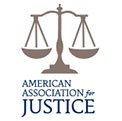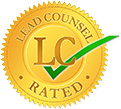Stairway Fall Injury Cases
Stairways may not look dangerous, but they can be hotspots for personal injury accidents. Whenever a person steps from one elevation to another (i.e., takes a step up or down), there is a risk that that person will trip and fall or slip and fall. When a trip and fall or slip and fall occurs on an uneven surface like a stairway, the results can be disastrous. Stairways become even more dangerous when they are poorly maintained, when there are substances or debris on the stairway, or where the stairway is poorly lit. These situations can result in the property owner where the dangerous stairway is located being found responsible for injuries that resulted from stairway conditions that could have been reasonably prevented.
Dangerous Stairway Conditions Leading to Falls
When an individual is climbing a stairway and falls, he or she is most likely to fall forward, into the stairs. This is known as a “trip and fall” accident if the person’s feet become entangled while traversing the stairs. Trip and fall incidents offer the victim the opportunity to brace him- or herself and thereby avoid catastrophic injuries. When a trip and fall occurs, the body’s natural reaction is to extend the arms and hands and use these appendages to absorb the impact of the fall. If the person does not react quickly enough or if his or her hands are occupied (i.e., the person is carrying a load), injuries to the face and head may result along with broken bones.
If a person is going down a stairway, the fall is more likely to be characterized as a “slip and fall.” Slip and falls typically result in much more severe injuries to the victim because the victim is not able to use his or her hands to brace him- or herself and prevent serious injury. Traumatic brain injuries, pelvic injuries, broken bones, and back and neck injuries are all common in slip and fall accidents.
Conditions on the stairway may make it dangerous for anyone to travel up or down the stairway:
- Poor lighting: Stairways should be illuminated so that a person can easily see where the steps are located and is able to place his or her feet securely on one step after another. When lightbulbs in stairwells burn out or if the property owner fails to install enough light receptacles, he or she is inviting danger for him- or herself and his or her guests and customers.
- Poor maintenance: Like other parts of a building, stairways deteriorate over time and can become more dangerous with increased use. Treads or other non-slip surfaces that may be on the steps may wear down and lose its effectiveness. Or the edges of the steps may become rounded with use and increase the chances of a slip and fall or trip and fall. Stairs should be periodically inspected for wear and tear or structural damage and repaired when necessary.
- Poor construction: In some cases, a stairway is dangerous from the moment it is created. Building codes dictate how stairs must be constructed, including the minimum width of each step and how high (the “rise) each step may be from the previous step. Stairways constructed in violation of these codes or that are constructed using inferior or slippery materials will make an accident more likely to occur.
- Foreign objects or substances: Just as slip and falls on wet surfaces can lead to severe injuries, so too stairs that are wet, that have snow or ice on them, or that are cluttered with debris are not safe for use.
Owners must regularly inspect their property and correct conditions that make stairways on their property dangerous to use. This would include clearing away wet substances and debris, regularly changing lightbulbs in stairwells, installing new light fixtures to better illuminate stairways, and ensuring signs of wear or deterioration are addressed by a competent professional as quickly as possible.
Look After Yourself After a Stairway Fall
Have you or a loved one fallen on a stairway? Be certain to obtain immediate medical evaluation and treatment right away, especially if you suspect you may have struck your head on a step or on the ground. Many of the injuries that are associated with stairway falls can quickly worsen if they are not addressed by a doctor soon after they occur.
Speak with Stern Law, PLLC as well. It may be difficult to photograph a stairway on which you fell, but you should be able to describe the stairway and its condition in detail. Premises liability attorney Ken Stern is resourceful and can locate witnesses or other evidence that will help corroborate your description and show a court that the property owner failed to take reasonable steps to keep the stairway on his or he property safe for use. Call Ken Stern and Stern Law, PLLC today at (844) 808-7529.













